Types of Roads and Their Challenges
Driving conditions can vary significantly depending on the type of road and the environment it traverses. Each road type presents unique characteristics, challenges, and safety considerations. Understanding these distinctions is crucial for ensuring safe and efficient travel, whether you’re navigating urban streets, rural paths, or off-road terrains.
Here’s an overview of road types and what to expect:
- Paved Roads
- Gravel Roads
- Dirt Roads
- Mountain Roads
- Desert Roads
- Muddy Roads
- Snow/Ice-Covered Roads
- Rocky Trails
- Water-Crossing Roads

Paved Roads
Paved roads are surfaces designed for smooth and efficient driving, commonly constructed from materials like asphalt or concrete. These roads are ideal for regular vehicles, providing good traction and minimal wear on tires. They are typically found in urban areas, highways, and suburban regions.
Key Features:
- Smooth Surface: Ensures comfortable rides and better fuel efficiency.
- Durable: Designed to withstand heavy traffic over long periods.
- Well-Marked: Includes lane markings, road signs, and signals for guided navigation.
Driving Tips:
Be mindful of changing weather conditions, such as rain, which can make paved roads slippery.
Maintain the speed limit and adhere to traffic rules.
Ensure tires are inflated to the recommended pressure for optimal performance.
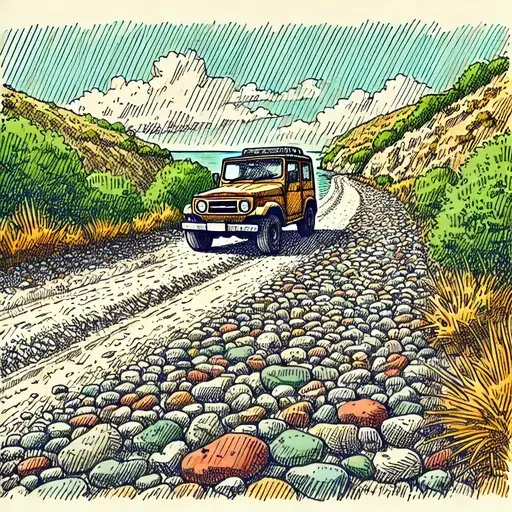
Gravel Roads
Gravel roads are constructed with layers of compacted gravel or crushed stone, offering a semi-smooth surface. These roads are commonly found in rural or less-developed areas and are used for access to farms, forests, and remote locations.
Key Features:
- Loose Surface: Gravel can shift under tires, requiring careful driving.
- Dusty Conditions: Driving on these roads often generates dust, reducing visibility.
- Affordable Construction: Cost-effective compared to paved roads but requires more frequent maintenance.
Driving Tips:
Use caution during wet conditions, as gravel can become slippery or wash out in heavy rains.
Reduce speed to avoid skidding or losing control, especially on curves or inclines.
Increase the following distance to minimize the impact of dust and flying stones.
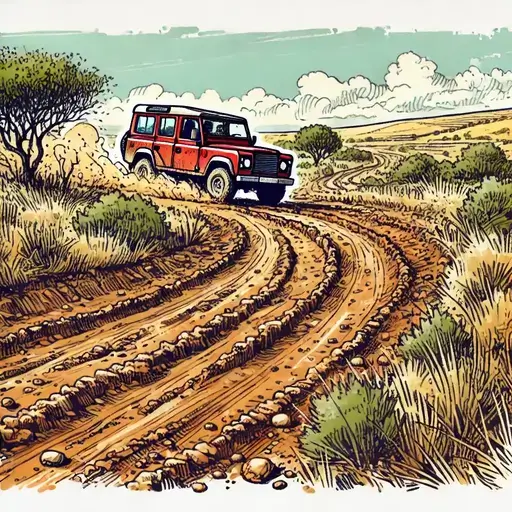
Dirt Roads
Dirt roads are unpaved pathways made primarily of compacted soil, often found in rural or undeveloped areas. They provide access to farmlands, forests, or remote communities and are less structured than gravel roads.
Key Features:
- Uneven Surface: Prone to ruts, potholes, and washboarding due to vehicle use and weather.
- Dusty or Muddy: Can become dusty in dry conditions or muddy and slippery when wet.
- Low Maintenance: Requires regular grading to smooth out irregularities.
Driving Tips:
Be aware of weather conditions, as dirt roads can become impassable after heavy rain.
Drive slowly and cautiously, especially in uneven or eroded areas.
Avoid sudden acceleration or braking to maintain traction and prevent skidding.
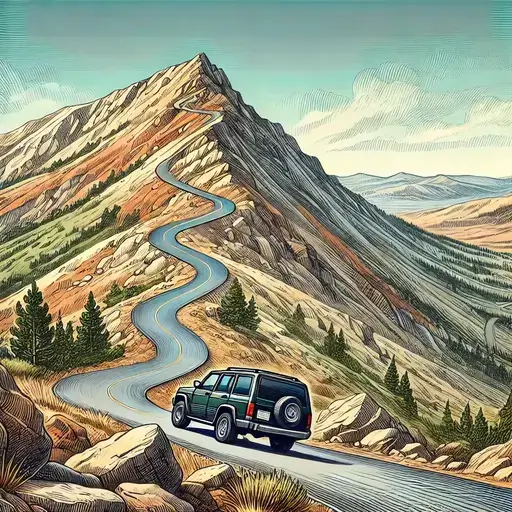
Mountain Roads
Mountain roads are pathways that traverse hilly or mountainous terrain, often characterized by sharp curves, steep inclines, and breathtaking views. These roads can be paved, gravel, or dirt, depending on the region and level of development.
Key Features:
- Winding Paths: Numerous twists and turns, including hairpin bends.
- Steep Grades: Inclines and declines that require careful navigation.
- Variable Conditions: May experience fog, landslides, or snow, depending on altitude and weather.
Driving Tips:
Check your brakes and tires before embarking on a mountain drive.
Use a lower gear when ascending or descending to maintain control and reduce brake wear.
Approach curves slowly and honk when visibility is limited, especially on narrow roads.
Stay alert for falling rocks, wildlife, or other potential hazards.
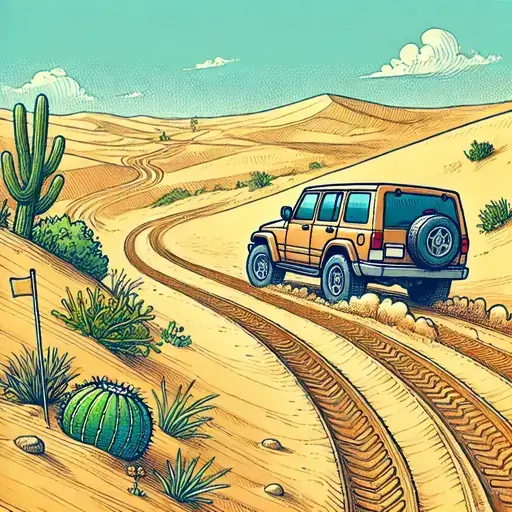
Desert Roads
Desert roads traverse arid and sandy terrains, often stretching through vast, open landscapes. These roads can be paved highways, compacted dirt tracks, or even unmarked sand paths.
Key Features:
- High Temperatures: Extreme heat can affect vehicle performance and tire pressure.
- Sand Drifts: Wind can blow loose sand onto the road, reducing traction.
- Limited Services: Fuel stations and repair facilities may be scarce in desert regions.
Driving Tips:
If driving on unmarked sand paths, reduce tire pressure slightly for better traction, but reinflate before returning to paved surfaces.
Carry extra water, fuel, and essential supplies in case of emergencies.
Ensure your tires are in good condition, as sand can increase wear and strain.
Be cautious of mirages and maintain focus on the road.
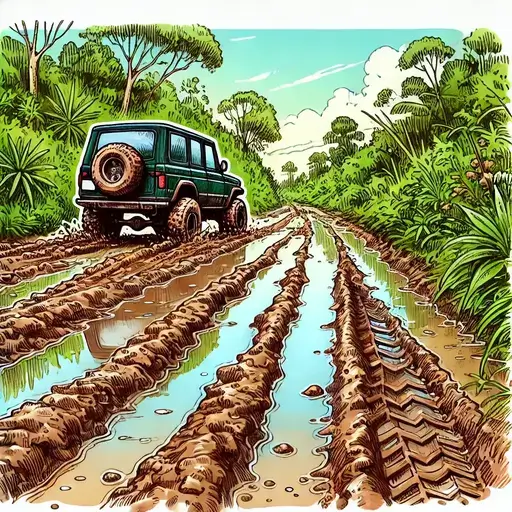
Muddy Roads
Muddy roads are typically found in areas with heavy rainfall or where soil retains water. These roads can become extremely slippery and challenging to navigate, especially for vehicles without proper traction.
Key Features:
- Slippery Surface: Reduces tire grip and increases the risk of skidding.
- Deep Ruts and Puddles: Created by frequent use and water accumulation.
- Unpredictable Depth: Mud may conceal deeper pits or obstacles.
Driving Tips:
Avoid driving through deep mud if possible, as it can trap your vehicle.
Use a vehicle with all-wheel drive (AWD) or four-wheel drive (4WD) for better traction.
Maintain steady, low speeds and avoid sudden braking or acceleration.
Stick to the edges of the road where mud is often shallower and firmer.
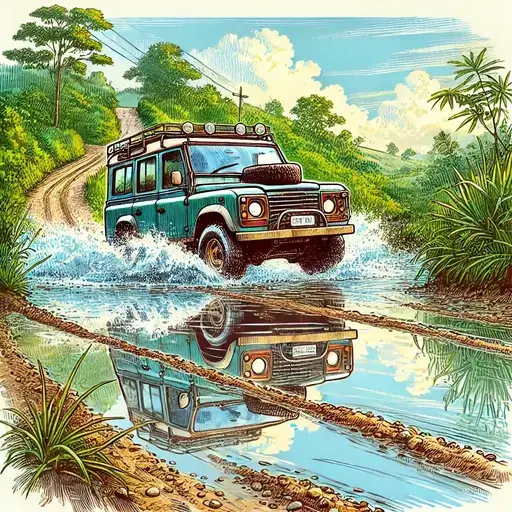
Water-Crossing Roads
Water-crossing roads are routes where vehicles must traverse through water bodies such as shallow streams, flooded areas, or river fords. These crossings require caution and preparation to ensure safety and vehicle integrity.
Key Features:
- Variable Depth: Water levels can change due to weather or tides.
- Unstable Base: The bed may consist of rocks, sand, or mud, which can reduce traction.
- Current Flow: Fast-moving water can make crossings dangerous, even for heavy vehicles.
Driving Tips:
After crossing, test your brakes on dry ground to ensure they are functioning properly.
Assess the water depth and current before crossing; avoid crossing if the water is too deep or strong.
Enter the water slowly and maintain a steady speed to avoid creating large waves or stalling.
Use a low gear and keep the engine revving steadily to prevent water from entering the exhaust.
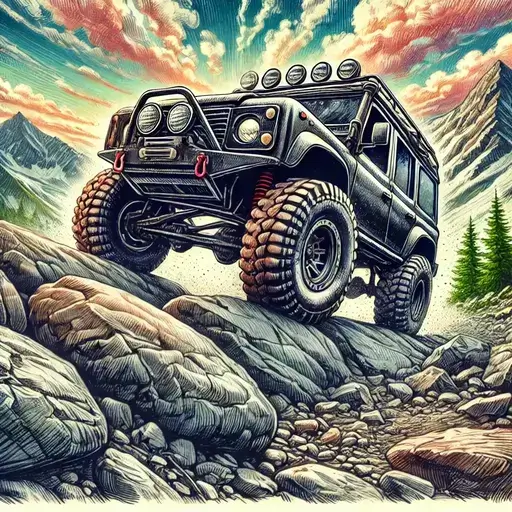
Rocky Trails
Rocky trails are rugged paths filled with rocks, boulders, and uneven terrain, typically found in mountainous or wilderness areas. These trails are common for off-road adventures and require specialized vehicles and skills.
Key Features:
- Uneven Terrain: Rocks and boulders create significant obstacles.
- Low Traction: Tires may struggle to grip loose or jagged surfaces.
- Slow Progression: Requires careful navigation and patience.
Driving Tips:
Engage four-wheel drive (4WD) for better traction and control.
Use a vehicle with high ground clearance and off-road capabilities.
Drive slowly and steadily to avoid damaging the undercarriage or tires.
Plan your route carefully, choosing the most stable and accessible path.
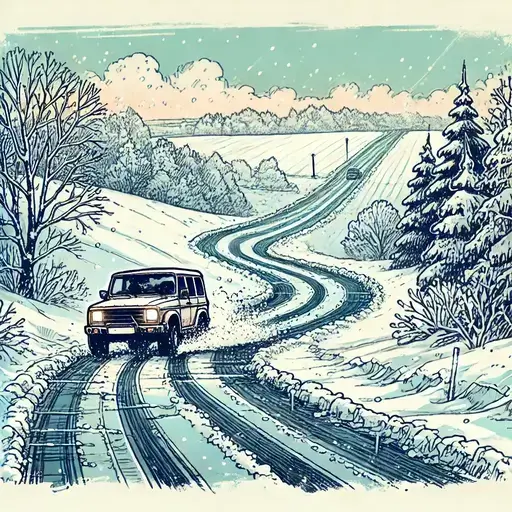
Snow/Ice-Covered Roads
Snow and ice-covered roads are common in cold climates and during winter. These roads present significant challenges, including reduced traction and visibility, requiring careful and deliberate driving.
Key Features:
- Slippery Surface: Ice and packed snow drastically reduce tire grip.
- Reduced Visibility: Snowfall and icy windows can obscure the road ahead.
- Black Ice: Invisible patches of ice are particularly hazardous.
Driving Tips:
Carry emergency supplies, such as blankets, a shovel, and de-icer, in case of breakdowns.
Use winter or all-season tires with good tread for better traction.
Drive at reduced speeds and accelerate or brake gradually to avoid skidding.
Increase the following distance to allow extra time for stopping.
Use low gears on inclines and avoid sudden maneuvers.